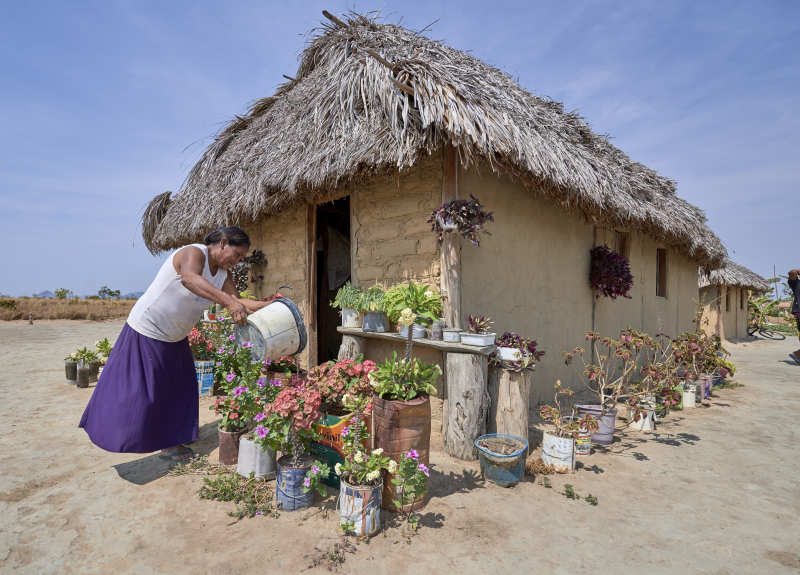
IN AMAZON, MISSION WORK CHANGED, BUT STILL MEANS ACCOMPANYING SUFFERING
Barbara Fraser/Catholic News Service
10/07/2019
LIMA, Peru (CNS) -- The Amazon basin, with its hundreds of indigenous tribes, has been mission territory since the first Spanish and Portuguese priests set out in canoes along its rivers in the 17th century.
As bishops and pastoral workers from throughout the region meet at the Vatican Oct. 6-27 to discuss the church's response to the challenges of ministry in the Amazon, its missionary history will be unmistakable.
"Missionary men and women have a deep history of relationship with this region," said the working document for the Synod of Bishops for the Amazon. "They have left deep traces in the soul of the Catholic people of the Amazon."
The church has grown in the centuries since the first missionaries arrived, "but deepening and updating are needed for it to be a church with an indigenous and Amazonian face," the document says.
The synod coincides with Pope Francis' designation of the month of October as "Extraordinary Missionary Month." Missionaries still play a vital role in the lives of many Amazonian communities, especially along the banks of remote rivers, where public services such as schools and health care are scant.
And although missionary work has changed to reflect the changing needs of the region's people, they say, the missionary's role of accompanying those who suffer remains unchanged.
"To be a missionary is to be with the people, trying to be one with them, bringing hope and greater humaneness," said Sister Maria Emilia Molenda Kuche, 73, a member of the Missionaries of Christ Crucified, a Brazilian congregation.
She is part of a team with other missionary sisters and a Spanish priest in Islandia, a small riverside community on the Amazon River in Peru. In a place where the rivers are the roads, they travel by boat to even more remote indigenous communities -- some Catholic, some not -- along the Yavari River, a tributary of the Amazon.
Islandia is near the three-way Amazonian border shared by Peru, Brazil and Colombia. The borders of Amazonian countries are remote, heavily forested, often lawless places marked by violence, illegal logging and mining, and crimes like the trafficking of persons for the sex trade or for labor in logging or mining camps.
On the Brazilian side of the border, Marta Barral, 45, a lay missionary from Madrid, Spain, works in the small town of Atalaia do Norte, near the Vale do Javari indigenous territory, a huge territory inhabited by indigenous tribes.
Some people in the territory still live in semi-nomadic groups that live by hunting, gathering and fishing, while others are settled in villages and have more contact with outsiders.

flowers in front of her home in the Wapishana indigenous
village of Tabalascada, Brazil.
CNS Photo/Paul Jeffrey
"I've changed with mission," said Barral, who belongs to a lay community that shares the spirituality of the Xaverian Missionary Fathers.
"Everything I have learned and lived goes with me," she said of her missionary experience, which has included time in Burundi, East Timor and Chad.
For Barral, being a missionary in the Amazon "means accompanying the indigenous people of Vale do Javari."
"It means getting to know their identities, loving them, respecting them, accompanying them in their struggles."
At a time when the Brazilian government is trying to roll back indigenous land rights in the country, "it means being present with them, standing beside them, walking together," she said.
For Father Miguel Angel Cadenas, a Spanish Augustinian missionary who has worked in Peru's northeastern Loreto region for nearly three decades, "It is important to seek a decent life for all, especially for those who are poorest."
During the years when he made an annual boat trip up the Urituyacu River to celebrate baptisms and marriages in Urarina Indian communities, that meant listening to villagers' grievances, including lack of health care, teachers who did not show up for school and soldiers who cruised the river, sometimes recruiting underage boys.
Mission means "entering into a relationship," said Sister Mercedes Arroyo Rizopatron, a Peruvian Missionary of the Sacred Heart of Jesus who works among the Shipibo-Konibo people in Peru's Ucayali region. She will participate in the synod for the Amazon.
The challenges of missionary work, and the very concept of evangelization, have changed as life has changed for the Shipibo-Konibo people among whom she works, she said.
"It's not evangelization as it was understood before, that I come to give something, but that I come to encounter someone who has many things, and who already has a relationship with God that is different from mine, but just as valid as mine," she said.
"It is an exchange," she added, in which missionaries help people face difficulties. For the sisters in her community in Ucayali, that often means accompanying indigenous people who face hardships when they migrate from rural villages to the city of Pucallpa.
"Indigenous people are spiritual, but are not people of religious practice," Sister Arroyo said. "They relate to mystery in in a different way," through their relationship with the natural world.
She said she hopes the synod will have the "audacity" to envision new forms of evangelization that will enable it to continue to accompany indigenous people in the rapidly changing Amazonian world.
 
-
